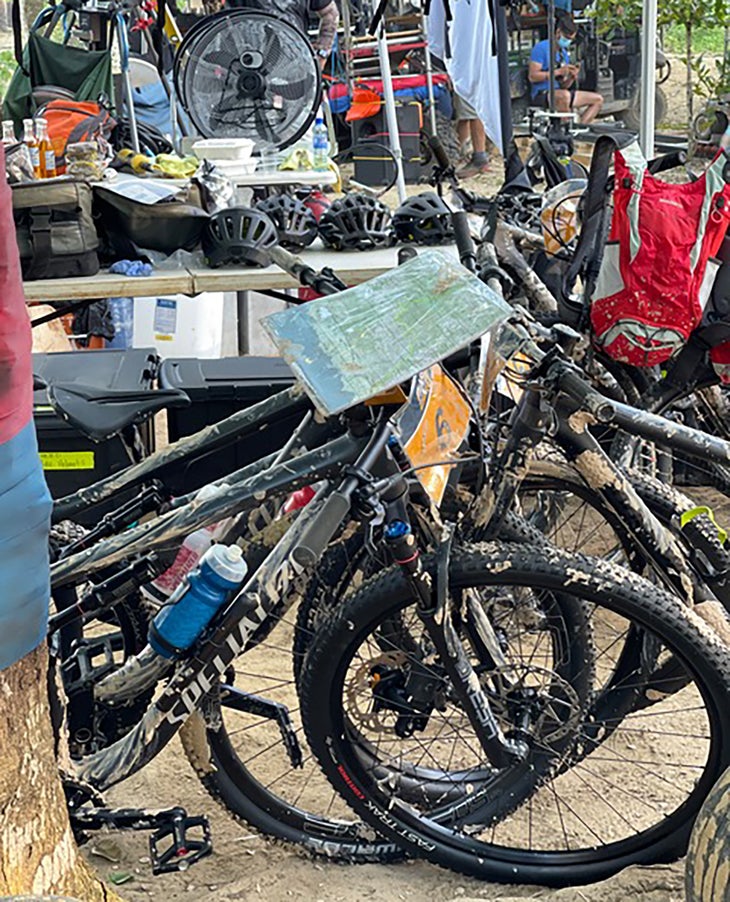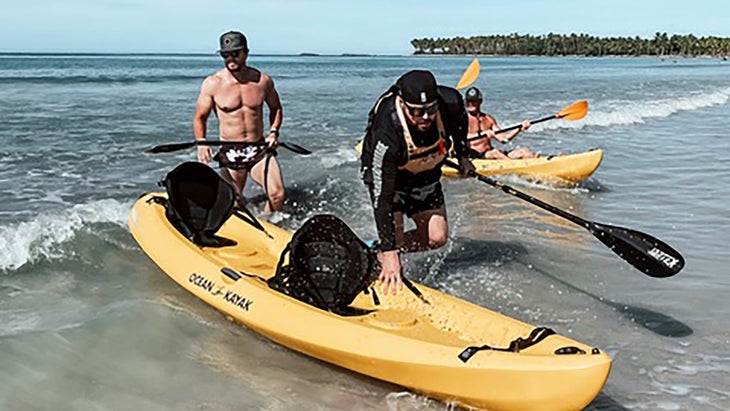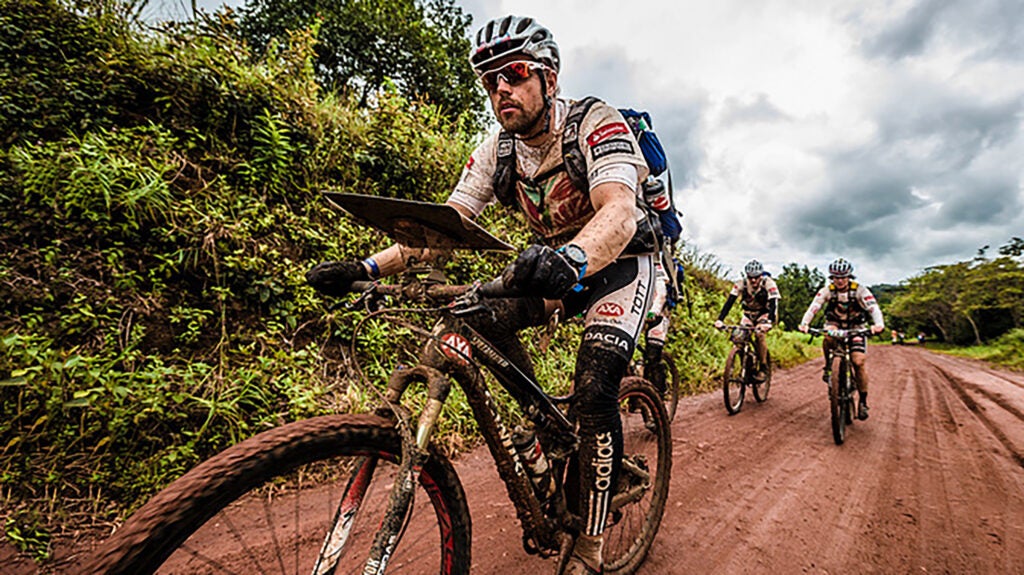No products in the cart.
Outdoor Adventure
How Realistic Is Mark Wahlberg’s New Adventure Racing Movie?
In “Arthur the King,” released on the big screen by Lionsgate on March 15, Mark Wahlberg and an adventure race team trail run, climb, zipline, mountain bike, and kayak while navigating a jungle route with a map and compass. They race through the night with headlamps, take short naps bundled up on the ground in emergency blankets, and slog through seemingly insufferable mud for hours. The action is dramatic and compelling, but is it, and the gear they use to do it, authentic?
On screen, Wahlberg and team compete in a race that’s based on a real event, the 2014 Adventure Racing World Championship. At these grueling races (which you now have to qualify for but didn’t back then) competitors ranged from world-class athletes to regular people who didn’t mind suffering while chasing adventure and finish lines. I was one of those people; I competed in 40 adventure races of varying distances over eight years.
Due to logistics, extremism, and expense, the sport is rather obscure. Adventure racing was most prominent in the media when TV producer Mark Burnett brought the Eco-Challenge to ESPN in 1995. Subsequent races aired on the Discovery Channel and USA Network up until 2002. Then a return Eco-Challenge was broadcast on Amazon Prime in 2019. After the early years of producing these grand, 7- to 10-day, nonstop, multi-disciplined endurance events all over the world in 4-hour miniseries, capturing human drama and hard-to-relate-to physical feats, Burnett changed focus to Survivor; it’s a lot easier to film a group of people on a small island than those traveling by various human-powered modes across 400 to 500 miles, night and day.
But here, in “Arthur the King,” a movie that Burnett had nothing to do with, adventure racing—and much of the outdoor gear that goes with it—is thrown once again into the mainstream. The movie captures the true story of Mikael Lindnord, a Swedish adventure racer played by Walhberg, and a stray dog that followed him and teammates for hundreds of miles in a race in Ecuador in 2014.
Because adventure racing, and this movie, includes so many sport disciplines and the accompanying gear that Outside readers are familiar with, I chatted with Lindnord (who has an Adventure Racing World Championship under his belt) about his gear choices and how he helped the film crew keep it as realistic as possible. I also spoke with Michael Kloser, five-time Adventure Racing World Champion whose backpack brand, OutThere, is worn by Wahlberg and team in the movie.
Lindnord said the film crew created “mood boards” of adventure racing gear that he would weigh in on based on what was authentic to the sport. Production would then reach out to brands to request gear. “We tried to get as close to the real thing as possible,” says Lindnord.
Based on these interviews and my experience, I feel confident saying that the gear in the movie is almost entirely authentic to what was used by Lindnord and teammates during the 2014 race and in others. Here’s a look at specific gear items and what the two had to say about it.
Adventure Racing Gear in “Arthur the King”

Backpacks
“I used OutThere packs the last five or six years of my career,” says Lindnord. “They work really well.” Kloser, who launched OutThere around the time he retired from the sport in 2012, supplied the different backpacks for Wahlberg and teammates. These packs have multiple, easily accessible pockets and the capacity to carry gear like helmets and PFDs while still allowing mobility—which is crucial in adventure racing. OutThere’s 15 L pack is used in the mountain biking scenes of the race, and the 30 L pack is used in the other scenes. To capitalize on publicity generated from the film, OutThere renamed the packs the “WC-15” and “WC-30” for “World Championship,” reflecting the race featured in the film.
Trail shoes
Each member of the adventure racing team cast wore a different Salomon trail running shoe, but Wahlberg, who plays Lindnord, wore the Salomon X-Alpine. Lindnord says the choice was “because you get the waterproofing.” (They’re not technically waterproof but he says they work well in wet conditions.) More importantly, the shoe excels in traction, upper protection, and comfort over days on end, qualities that are imperative for an adventure race or other kind of mountain-running adventure.
Paddles
The team and others in the film used carbon-fiber, winged Epic paddles. This design is authentic to what many adventure racers use. They’re lightweight and paddle efficiently if you have a good stroke—the winged shape can be unforgiving if not. Lindnord says he used a Swedish-brand paddle but that the production company opted for the American brand.

Kayaks
Paddlers might be surprised—or skeptical—to see sit-on-top plastic kayaks in a World Championship of any sort, but plastic boats from Ocean Kayak are the norm. They’re durable, easier for race management to transport, and stable. Lindnord jokes, “You can paddle all you want and they go one speed.” Yes, there are faster, closed-deck boats, but there are certain benefits to sit-on-top kayaks, as seen in the movie. No spoilers here.
Mountain Bikes
Lindnord says that while his team raced Specialized Epic bikes—“the best of the best”—the film utilized lower-end Specialized cross-country mountain bikes. Specialized helmets also make an appearance.
Headlamps
“The lights weren’t the ones we use,” says Lindnord, who explains that he and his team used either Silva or German-made Lupine headlamps. The large housing on the ones depicted in the movie don’t fare well for racers while running (too much bouncing), or when navigating overgrown jungles (they’d likely get snagged on branches, brush, and vines).
Climbing Equipment
There’s a section or two in the movie’s race where rock climbers might raise an eyebrow about gear and strategy, but having a climbing harness, webbing, a pulley, and carabiners on your person during an adventure race is common in order to navigate a climbing section in the middle of a foot or biking leg.
Shortcuts
Not related to gear, but to the question of authenticity, some race decisions in the movie leave the viewer wondering if a team would be disqualified for their choice. Could the scenario the team comes across in the race actually happen? “Technically yes,” says Kloser. He and his team once jumped in a fast-moving river—“with Class III+ or IV+ rapids” to travel more quickly and less painfully than hiking along a sidehill. “Nothing in the rules said we couldn’t do it,” he says. He also says that he and team once completely bypassed a multiple-hours-long ropes section and a swim through cold rivers by doing “just a gnarly jungle bushwhack, literally crawling on all fours,” which leapfrogged them ahead of several teams. “There was no checkpoint at the ropes,” he says, so the team wasn’t disqualified. (It is a wild sport.)
In the film, there are some modifications and embellishments for Hollywood, he admits, but generally, the complicated rules (or lack of rules) of adventure racing are conveyed.
“Adventure racers, rock climbers, or paddlers—they may look at parts of it and think, ‘They wouldn’t really do that type of thing,’” says Kloser. “But they do the sport justice. And for 99% of the people who see the movie, it’s realistic to them—insanely crazy realistic.”
Source link

